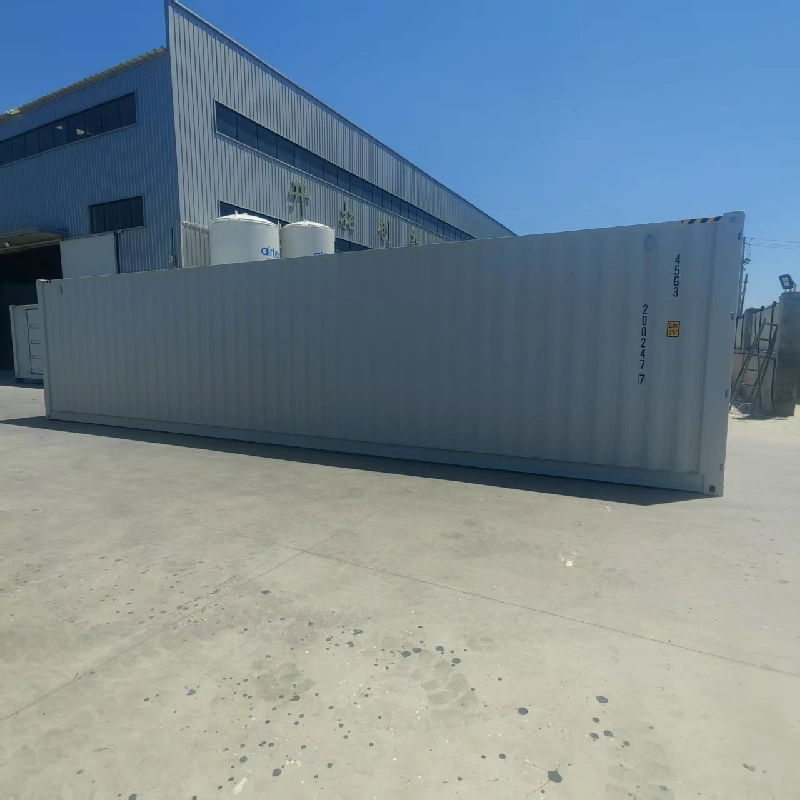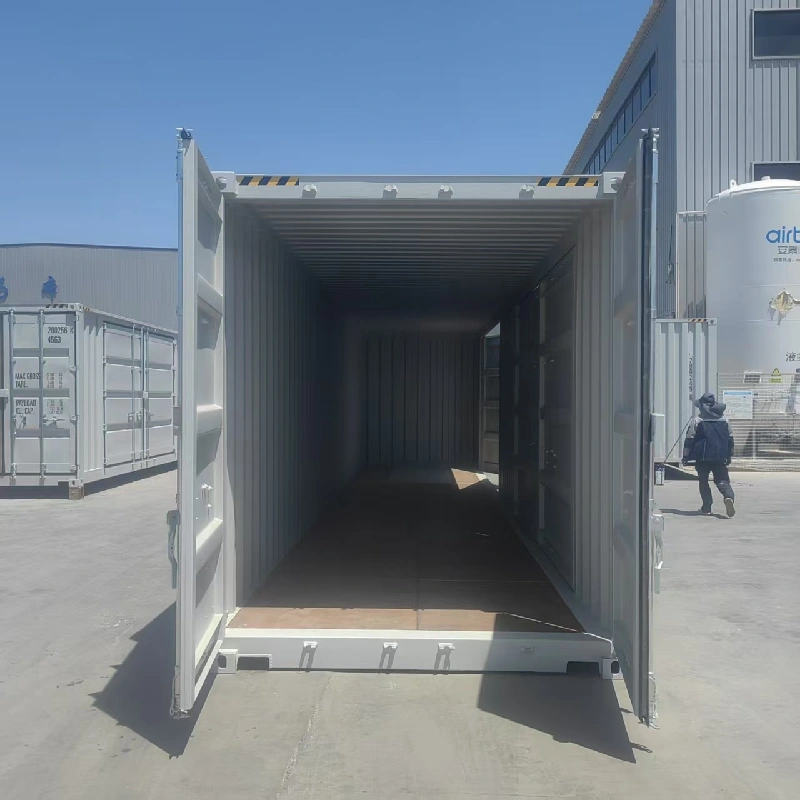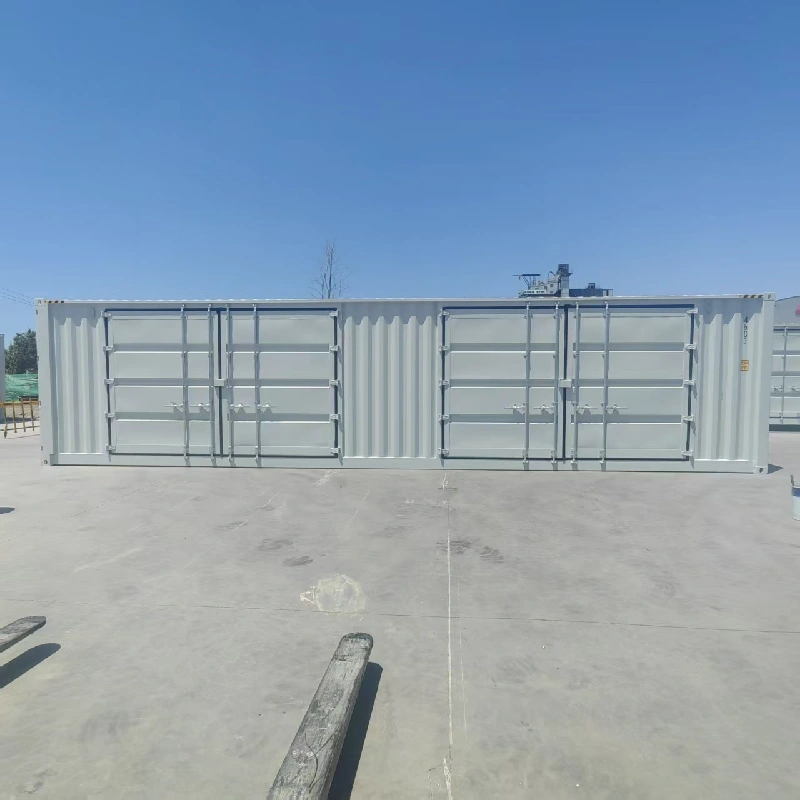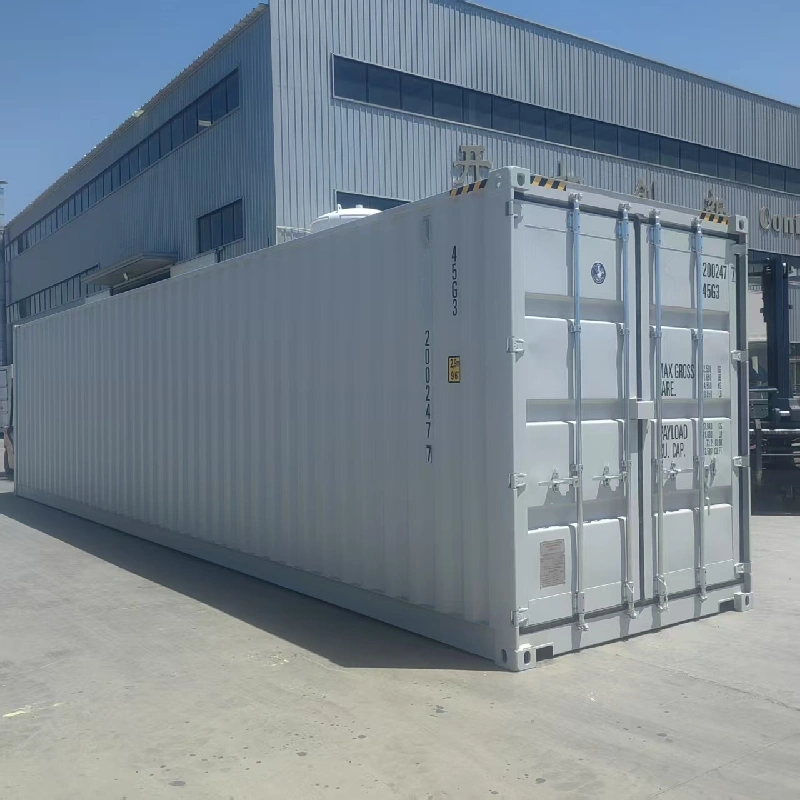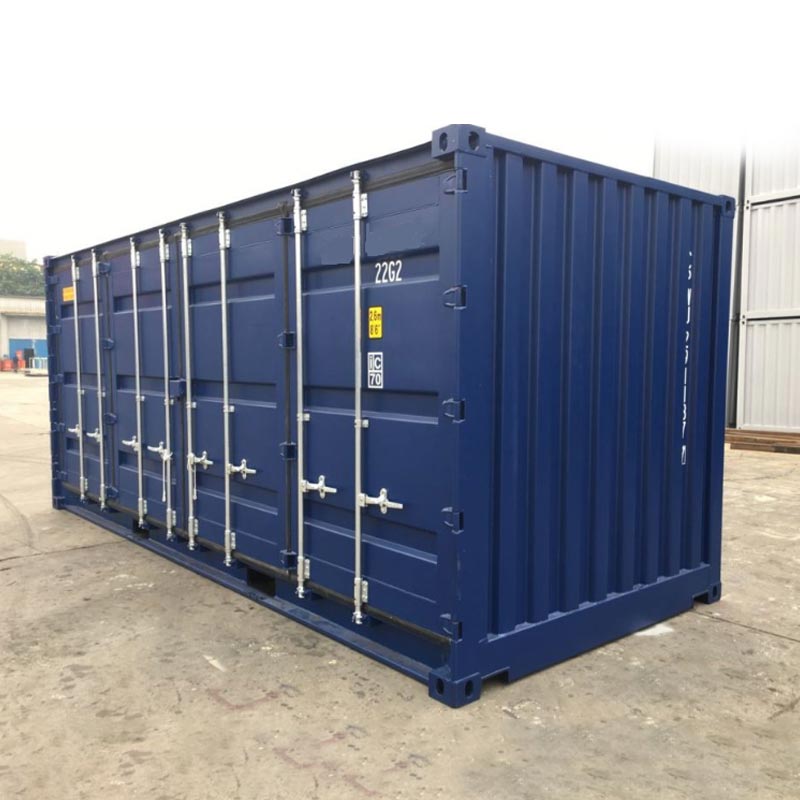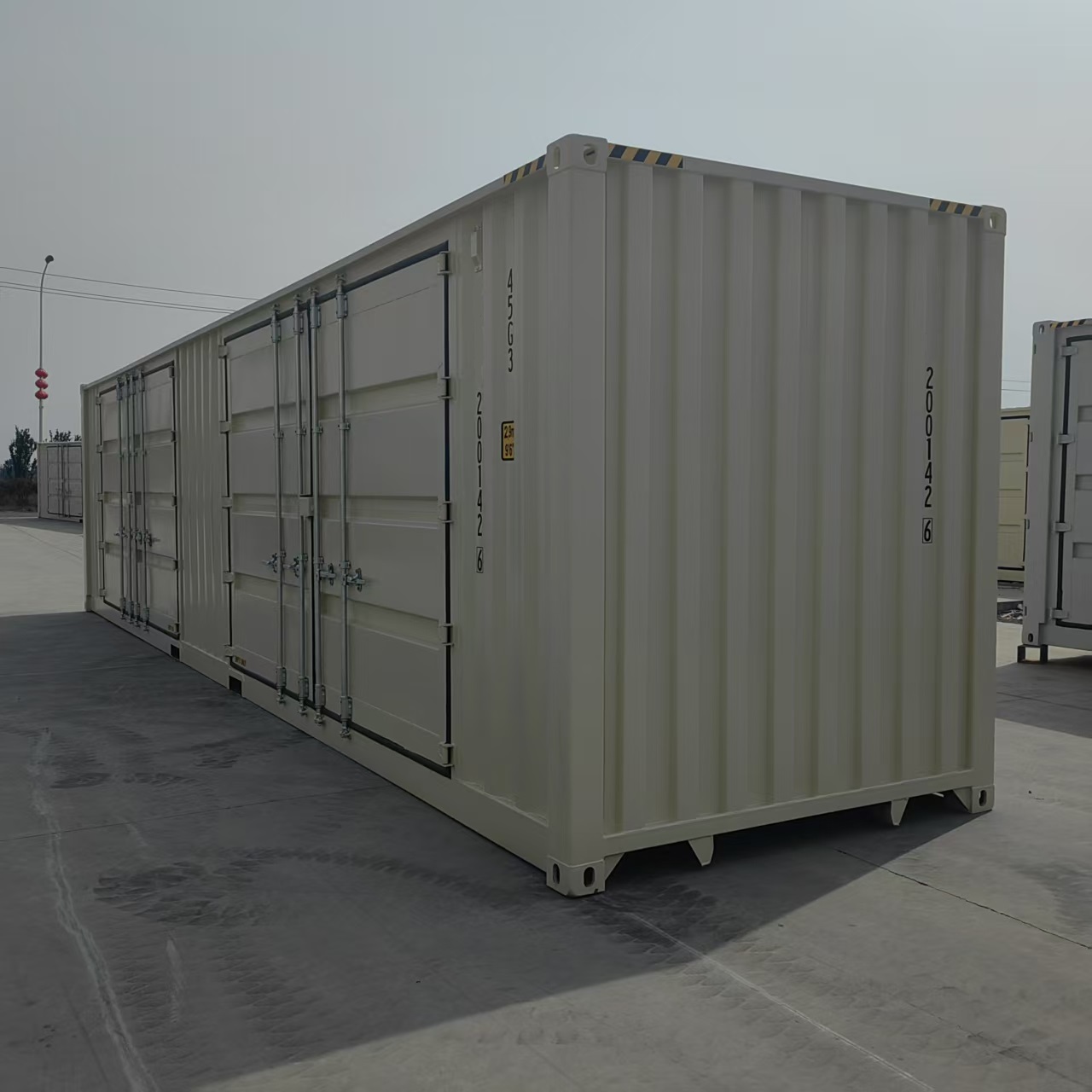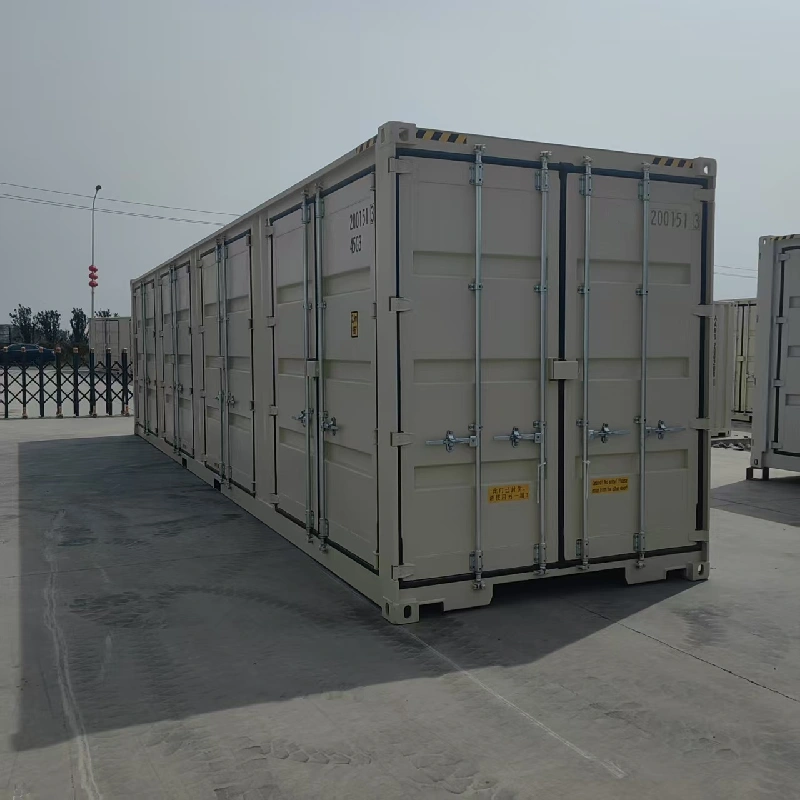
 English
English  简体中文
简体中文 Español
Español Português
Português русский
русский Français
Français 日本語
日本語 Deutsch
Deutsch tiếng Việt
tiếng Việt Italiano
Italiano Nederlands
Nederlands ภาษาไทย
ภาษาไทย Polski
Polski 한국어
한국어 Svenska
Svenska magyar
magyar Malay
Malay বাংলা ভাষার
বাংলা ভাষার Dansk
Dansk Suomi
Suomi हिन्दी
हिन्दी Pilipino
Pilipino Türkçe
Türkçe Gaeilge
Gaeilge العربية
العربية Indonesia
Indonesia Norsk
Norsk تمل
تمل český
český ελληνικά
ελληνικά український
український Javanese
Javanese فارسی
فارسی தமிழ்
தமிழ் తెలుగు
తెలుగు नेपाली
नेपाली Burmese
Burmese български
български ລາວ
ລາວ Latine
Latine Қазақша
Қазақша Euskal
Euskal Azərbaycan
Azərbaycan Slovenský jazyk
Slovenský jazyk Македонски
Македонски Lietuvos
Lietuvos Eesti Keel
Eesti Keel Română
Română Slovenski
Slovenski मराठी
मराठी
40Ft High Cube Container with 2 Side Doors
Send Inquiry
The 40Ft High Cube Container with 2 Side Doors is an efficient logistics equipment specially designed to meet special transportation needs. The most prominent feature of this container is its 2 side doors, with the opening width of a single set of side doors reaching approximately 4 - 5.75 meters (varies by design). This design greatly enhances the convenience of cargo loading and unloading, making it easy to handle oversized, extra-long goods that are bulky, irregularly shaped, and difficult to load or unload through the end door of ordinary containers. For example, large mechanical equipment, construction materials, vehicles, etc., can all be smoothly moved in and out of the container through the side doors.
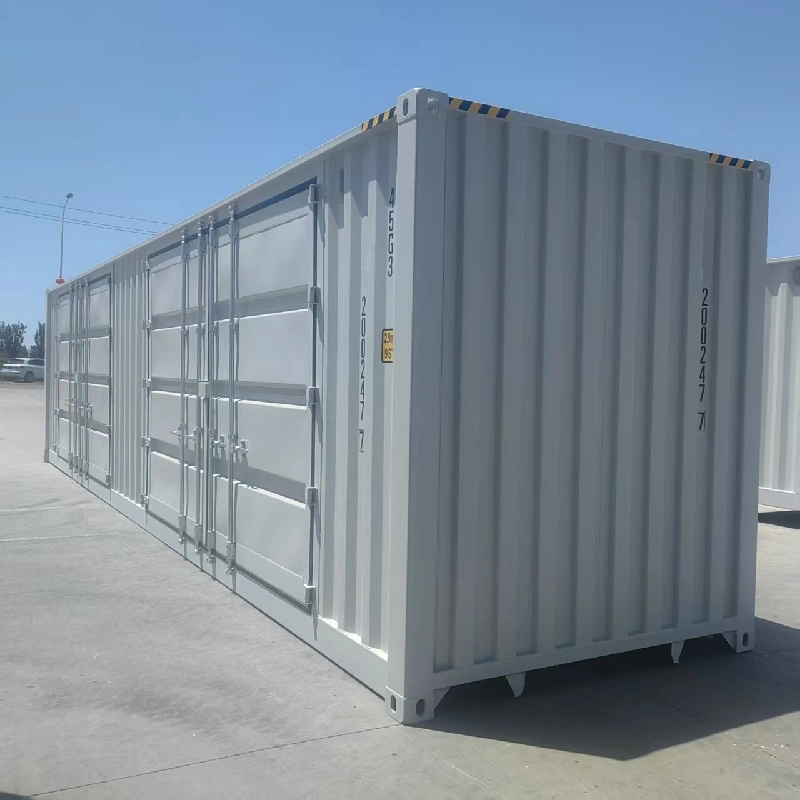
Specification
| CLASSIFICATION | DIMENSION | |
| MAX. GROSS WEIGHT | 32500 KG | |
| TARE WEIGHT | 4560 KG | |
| MAX. PAYLOAD | 27940 KG | |
| INSIDE CUBIC CAPACITY | 73.2 M3 | |
| EXTERNAL | LENGTH | 12192 MM |
| WIDTH | 2438 MM | |
| HEIGHT | 2896 MM | |
| INTERNAL | LENGTH | 12032 MM |
| WIDTH | 2292 MM | |
| HEIGHT | 2653 MM | |
| DOOR OPENING (REAR) | WIDTH | 2340 MM |
| HEIGHT | 2540 MM | |
| DOOR OPENING (SIDE) | WIDTH | 4000 MM |
| HEIGHT | 2502 MM | |
Unique Features
1.Flexibility in Segmented Loading/Unloading: Two independent side doors are installed on the same side (instead of a single full-length door). Each door can be opened individually based on cargo size, avoiding exposure of goods or space waste caused by fully opening the entire side. This is particularly suitable for loading small to medium-sized goods or scenarios requiring segmented loading/unloading.
2.Precise Operation and Safety Protection: The two doors are controlled independently, allowing operations to be targeted at goods in specific areas. This reduces exposure of irrelevant areas, lowering risks of cargo falling, rain damage, or theft during loading/unloading. Meanwhile, opening a smaller area facilitates precise operation by manual labor or small equipment.
3.Optimized Space Utilization: The high-cube design (internal net height ≥ 2.9 meters) retains the advantage of vertical space, while the two doors on the same side enable "zoned access" horizontally. It is suitable for stacking goods by zones (e.g., goods of different categories or destinations), improving the efficiency of internal space planning.
4.Enhanced Structural Stability: Compared to a single full-length door, the door frames of the two doors on the same side distribute stress, reducing the load-bearing pressure on a single door hinge. Combined with the rigid structure of the standard 40ft length (approximately 12.19 meters), the overall deformation resistance is stronger, making it more durable especially during long-distance transportation or under complex road conditions.
5.Compatibility with Standardization and Scene Adaptation: It retains the standard size of a 40ft container, which can be normally adapted to sea, land, and rail transportation tools. Meanwhile, the same-side door design does not affect the integrity of the other side of the container, allowing it to be stacked adjacent to other containers or placed against a wall on one side, adapting to more space-constrained scenarios (e.g., urban logistics stations, temporary construction site storage areas).
6.Adaptability for Multi-Functional Transformation: When transformed into temporary facilities (such as mobile warehouses or workstations), the two doors on the same side can be used as an "entrance" and a "material passage" respectively, or separated into a display area and an operation area (e.g., the front door for product display and the rear door for restocking), achieving functional zoning without occupying space on the opposite side.
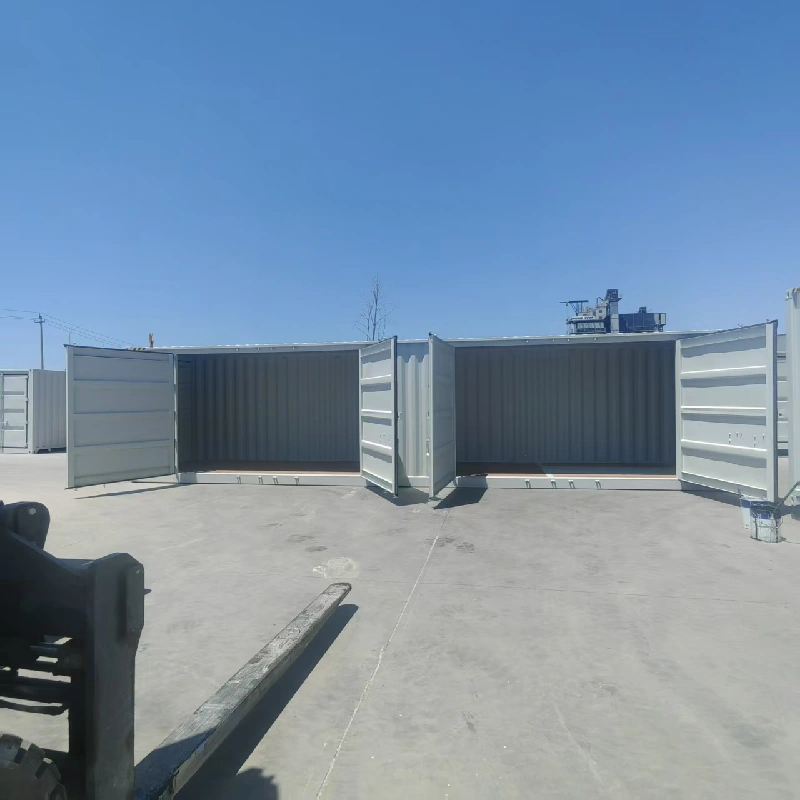
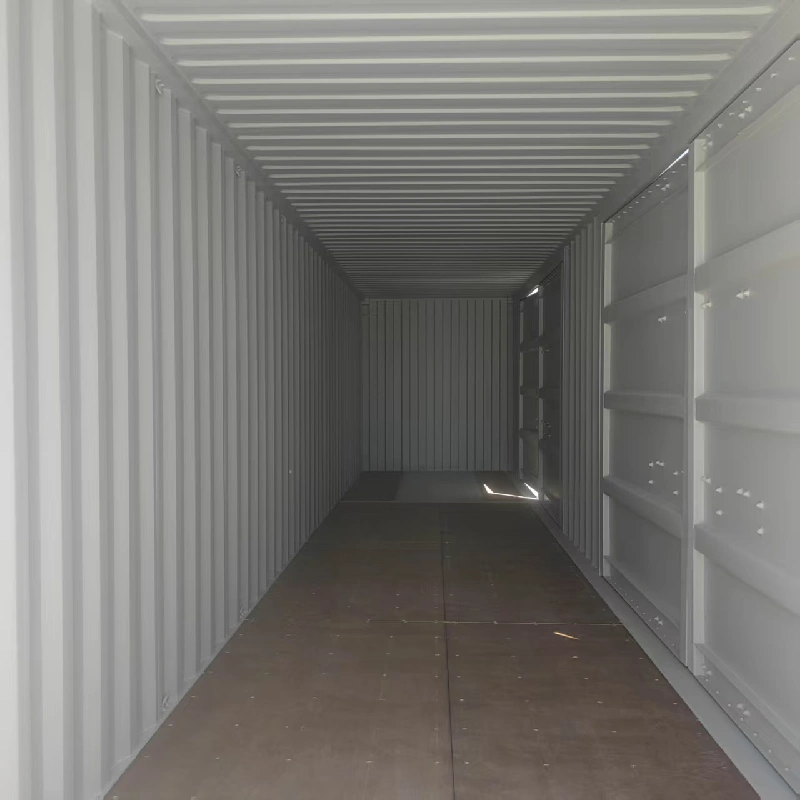
Application Scenarios
1.Zoned Logistics and Refined Loading/Unloading: Suitable for scenarios where goods are stacked in zones by category, batch, or destination (such as e-commerce warehousing and distribution, LCL transportation for multiple customers). The two doors on the same side can correspond to different zones respectively, enabling "opening on demand and precise goods retrieval". This reduces the movement and exposure of irrelevant goods, improving sorting efficiency.
2.Transportation of Small-to-Medium Equipment and Bulk Goods: For small-to-medium machinery (e.g., small machine tools, medical equipment), batches of packages, or components, a single door can be opened independently for loading/unloading. This avoids operational redundancy caused by fully opening the entire side, and the small-range door opening is more compatible with manual operations or small forklift work.
3.Transformation of Outdoor Temporary Functional Spaces: When transformed into mobile offices, tool storage warehouses, small retail stations, etc., the two doors on the same side can be planned as an "entrance" and a "material passage" respectively, or separated into a display area and an operation area (e.g., the front door for product display and the rear door for restocking). This achieves functional zoning without occupying space on the opposite side.
4.Operations in Space-Constrained Scenarios: In narrow warehouses, single-side unloading positions, or when stacked against walls, the two doors on the same side can make full use of single-side space for loading/unloading without the need to reserve operational space on the opposite side. It adapts to scenarios with limited site width (such as urban logistics stations, temporary storage areas at construction sites).
5.Transportation of Safety-Sensitive Goods: Used for transporting goods vulnerable to rain or exposure (e.g., electronic devices, precision instruments). Small-range door opening reduces contact between goods and the external environment, lowering risks of moisture, pollution, or theft. It is particularly suitable for short-distance transfers in multi-segment transportation.
6.Bulk Transportation in Agriculture and Light Industry: For loading small-to-medium agricultural machinery parts, bundled pipes, bagged agricultural products, etc., the two doors on the same side allow segmented loading/unloading of different batches of goods. Combined with high-cube space for stacking, it increases single-transport volume while simplifying the loading/unloading process.
